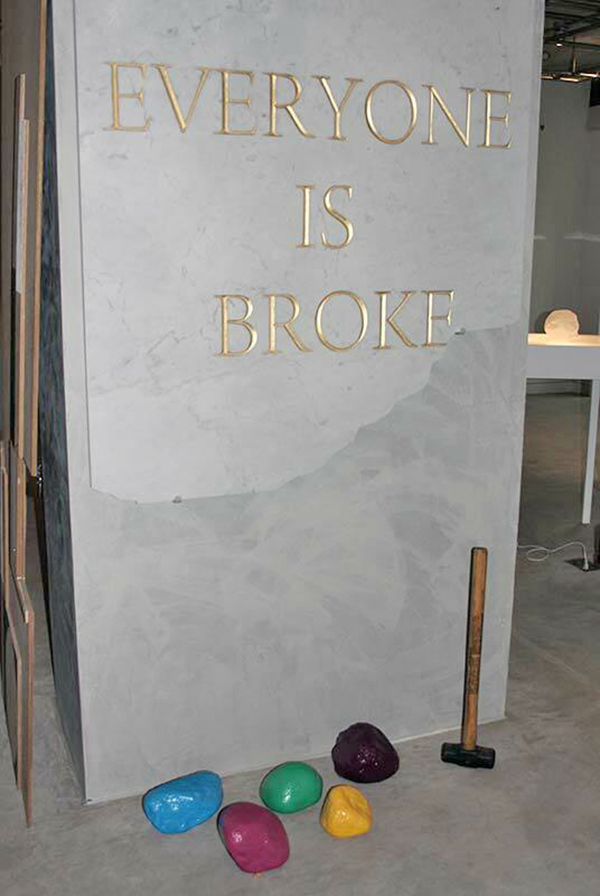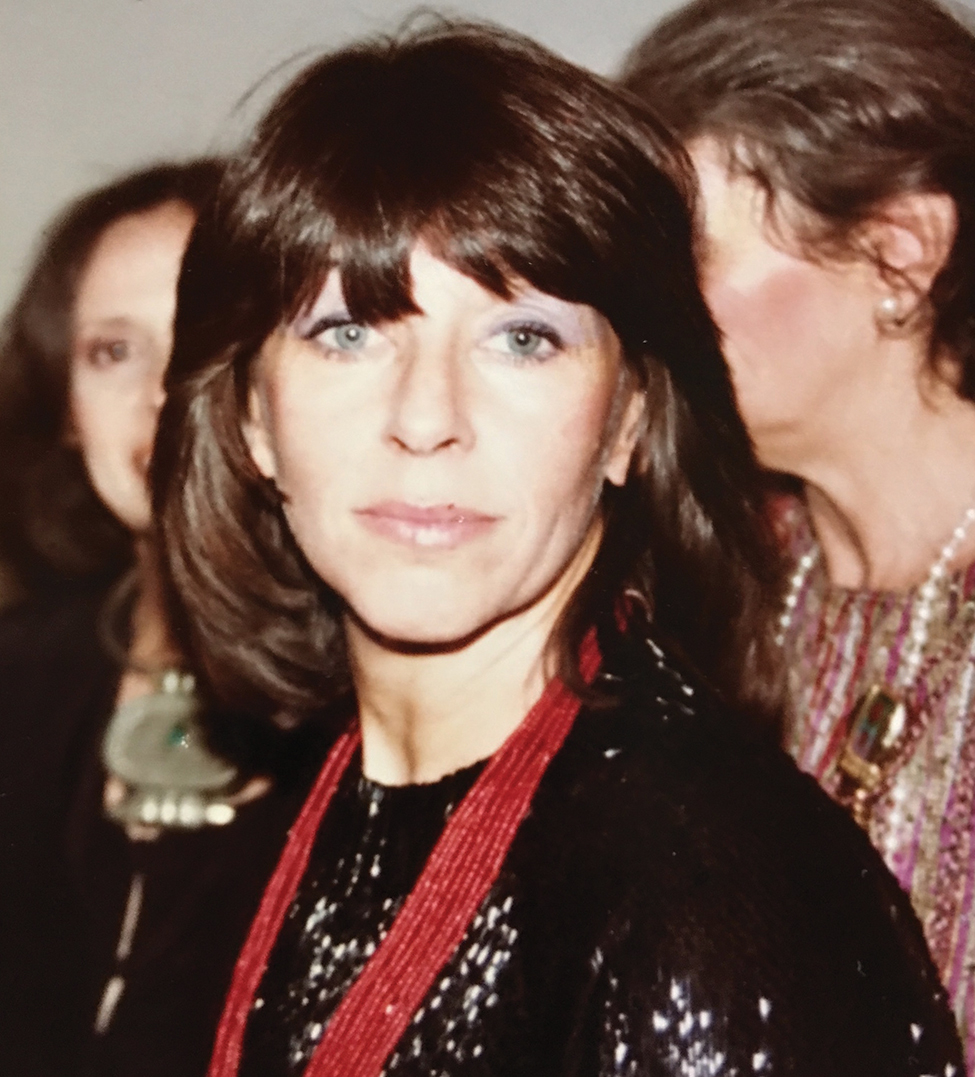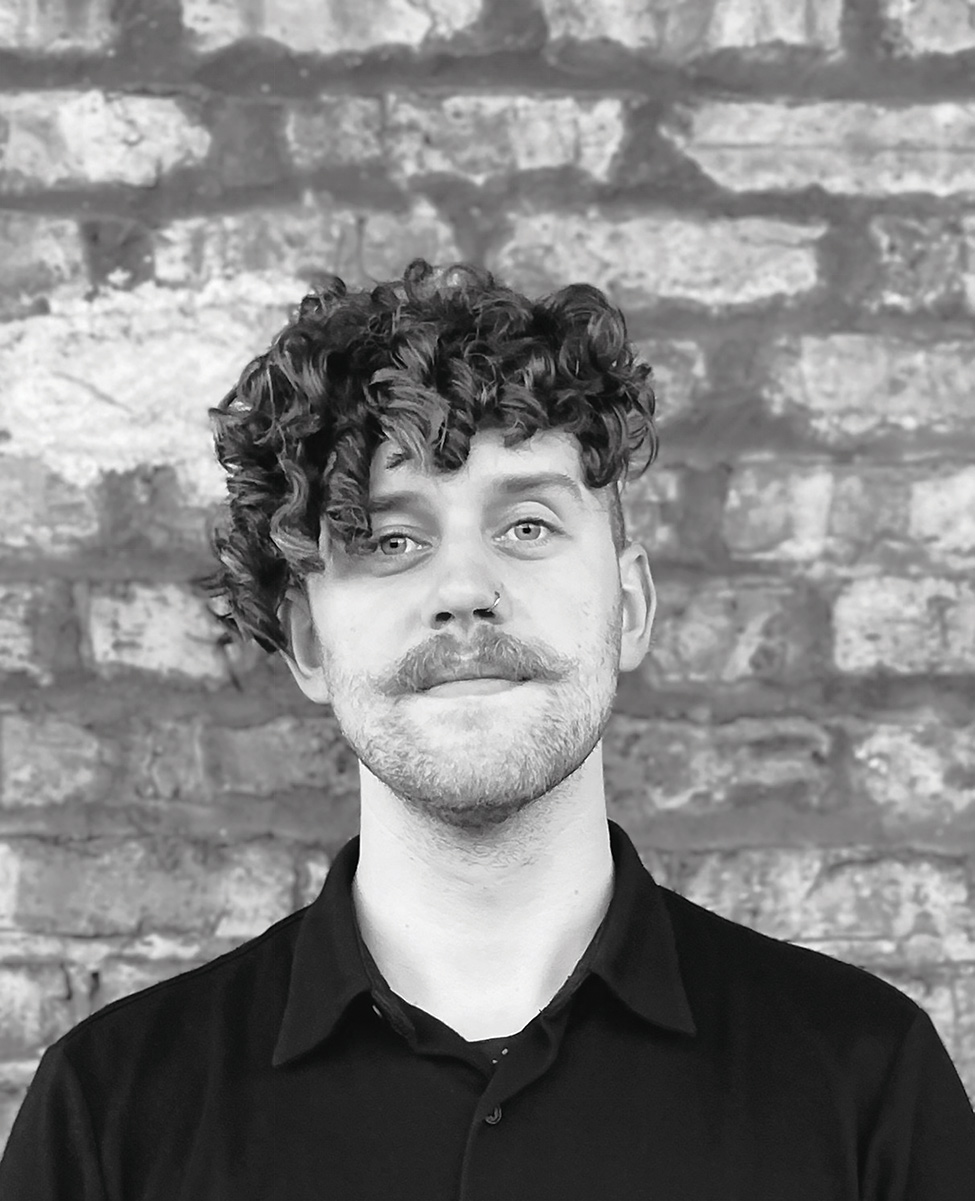Collector Profile: Marilyn + Larry Fields

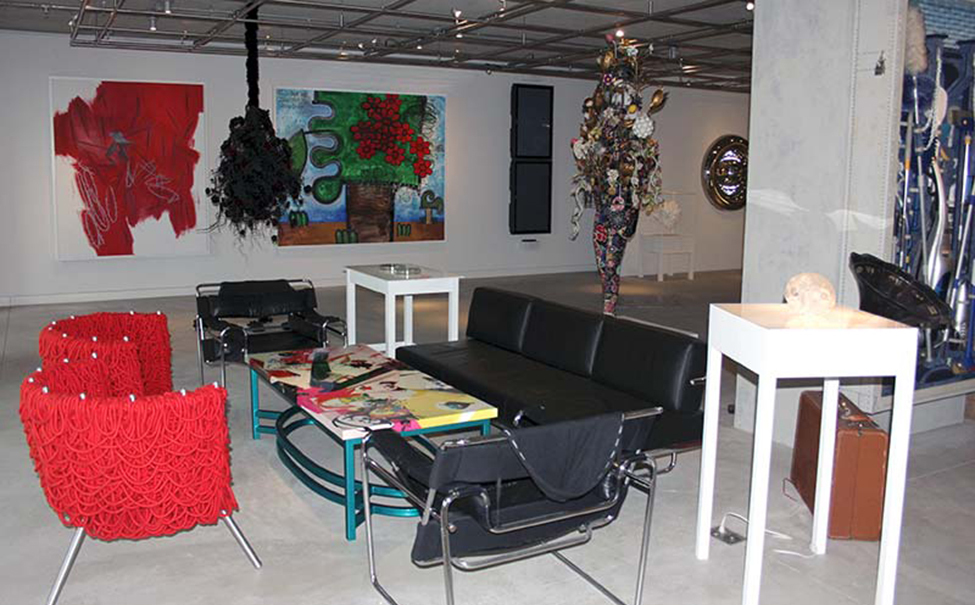
By GINNY VAN ALYEA
The label 'collector' can convey the notion that buying and acquiring art is an insular pursuit, reserved for insiders wih connections and expensive taste. Collectors Marilyn and Larry Fields prove that a passion for collecting and living with art can begin at any age, and their shared enthusiasm is a lesson to anyone interested in learning about contemporary art and the artists who create it. Their story of how they filled their lakefront high-rise home with works by some of the greatest contemporary artists of our time in a few breath-taking years is a unique inspiration. The art the Fieldses have collected complements striking design pieces from the 1940s and '50s and fills their home with style and their life with meaning. Their private home gallery, located in an adjacent condo, is devoted to exhibiting works from their collection on a rotating basis. On a rainy afternoon, I enjoyed keeping up with the Fields's frenetic conversation and sharing their passion for the art and artists who have touched their lives. –GV
To walk into the home of Marilyn and Larry Fields is to enter a tranquil, expansive art space. Stepping off of the elevator onto their private floor, I encounter a towering collage of hundreds of photographs that Jason Lazarus scoured from the photo-sharing site Flickr; each image depicts someone's personal experience during the Iraq war. This was just the first of many powerful pieces I would see. Seated with Marilyn in the couple's round living room, overlooking Lake Michigan, she explains, "We certainly live with art 24/7. It's really become our passion."
Married for 34 years, the Fields say they've always bought art. If something was visually appealing, they'd buy it. Larry says that at one point they were interested in posters and art glass, picking out a piece here or there, but he admits, "That was mostly haphazard—nothing really made a collection." They aimed for a new level in 2000 after putting a down payment on a condo in a Streeterville building designed by French architect Lucien Lagrange. They didn't move in for five years, but in that period several decisions affected their collecting savvy: they became very involved with the Museum of Contemporary Art— Marilyn joined the Women's Board in 1998, while Larry became an MCA trustee around 2004 – and they began attending an annual art extravaganza, Art Basel Miami, in 2002.


The Fields' home is a balance of art, architecture and contemporary design. Though Marilyn and Larry collect as a team, their roles at home are different. Marilyn has taken great care to develop the character of the home through furniture and design, collecting 1950s modern furniture as well as pieces by 1940s French designers Jean-Michel Frank and Andre Arbus. When they finally moved into their apartment in 2005, Marilyn describes opening up the art and furniture as, "One of the most exciting moments—we'd bought all of these beautiful pieces and they'd been in storage for years." For Larry, "We looked at which pieces had dialogue with each other. It's fun buying, but it's even more fun installing."
Each piece in their collection exists in relation to the others around it. According to Marilyn, "We love how each piece speaks to the other. We try to make it all work. But most important, it has to appeal to us."
Larry wants to know, "What's the contextual idea? How is it somehow related to society today? Is it process oriented? When you meet an artist, they can open up your eyes to a way you haven't seen the world." Marilyn says: "We've grown tremendously and become more sophisticated collectors because of the MCA. Meeting the curators and artists, you really take so much more from the art that you're buying. It's given us a different type of focus. We've also met so many amazing people and made many friends in the art world, including other collectors."
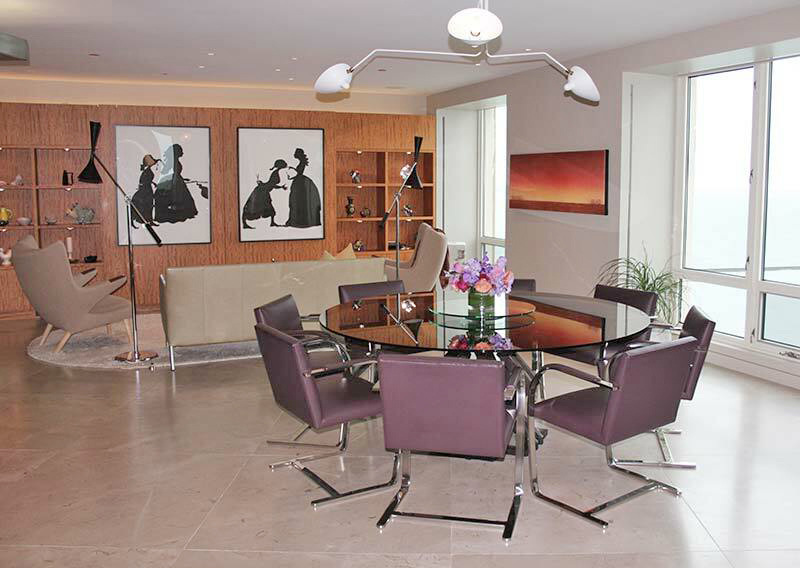
The Fields have collected art from many cities in many countries, but they feel a great deal of pride for the City of Chicago, as well as an obligation to support it art community. Larry and Marilyn agree that the time seems to be right in Chicago for a boost for some artists and galleries. Larry point to success stories of young artists like Theaster Gates, Rashid Johnson, Angel Otero, and William J. O'Brien, each of whom have work in the Fields' collection. To Larry because of the international attention these artists have recieved, he suspects that people who may have been previously reluctant to purchase work from a Chicago gallery (instead of say, in New York) may now have more confidence buying art here. Larry says he and Marilyn try to support younger artists when they're getting started; for instance they have acquired a piece from each of Gates' series. Larry states, "It takes a village to support artists here: galleries, art schools, non-profits, museums—they all work together to create a nurturing experience."
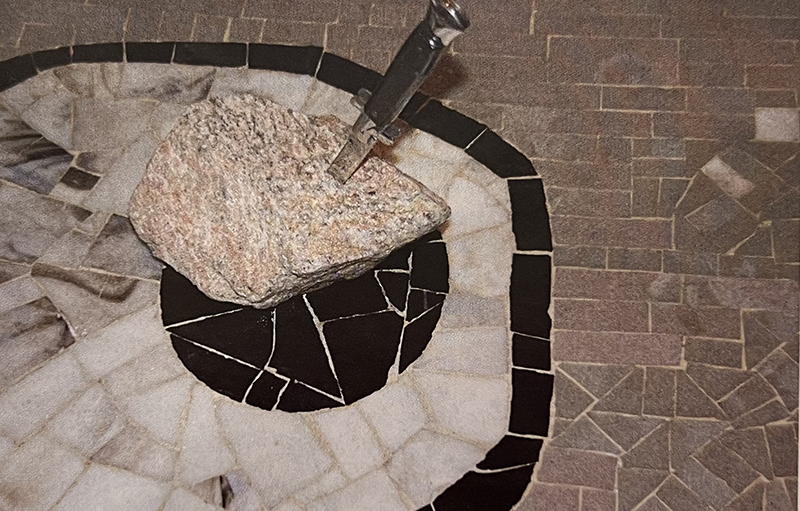
The couple credits the opening of Millennium Park in 2004, followed by the Art Institute of Chicago's Modern Wing in 2009, with finally drawing a more international crowd to the city. Larry explains, " I think Anish Kapoor's 'Bean' [Cloud Gate] in Millennium Park has become sort of symbolic of a new city-wide pride. It has drawn people to the city just for this kind of art experience." Marilyn adds, "That was not something that used to happen. The amount of funding the community raised was pretty incredible. The gardens, Jaume Plensa's Crown Fountain—it's all perfection. " Larry hopes that what has been successful about Millenium Park could someday be done to update other sites in the city as art showcases, such as the iconic Navy Pier.
Navy Pier will in fact be transformed for a weekend this September when EXPO Chicago debuts, returning an international contemporary art fair to a much-loved venue. Marilyn recalls that during Chicago's art fair heydey in the early 1980s, Vernissage was the party for the premier contemporary art fair in the world. As part of the MCA's Women's Board, which is once again hosting Vernissage on September 19, she remembers, "There was Art Basel in Switzerland, but not much else. From 1982 here until it ended in 2004 it was really phenomenal. Galleries who came from around the world were very, very disappointed when it ended. The thought of bringing it back to Navy Pier, where everyone's heart was, is exciting, and many of those original galleries are coming back." To run a successful fair here again, this is a critical place for a certain scene, and Marilyn agrees that Vernissage is an important element that will get people excited about the return of the fair.

Having discussed collecting, art in Chicago, and the upcoming EXPO, Larry relished the opportunity to introduce me to his favorite works, so I made a concerted effort to keep pace as he rattled off names of artists and the story behind each piece. Both Marilyn and Larry have personally placed each work of art, but they've also largely kept the experience of others in mind when deciding where certain works should be. Certain spaces are meant for quiet pieces, such as one of Sol Le Witt's minimalist cubic constructions placed in a window overlooking the back of the MCA. Nearby is a subtle Fred Sandback installation, as well as a work by Italian painter Lucio Fontana. On a bench in the entryway is a commissioned book by Deb Sokolow, featuring an amusing conspiracy story about Larry – who works as a cattle futures trader – and some cows mysteriously being found in a warehouse on the west side of Chicago. Marilyn calls it a clever homage to Larry.
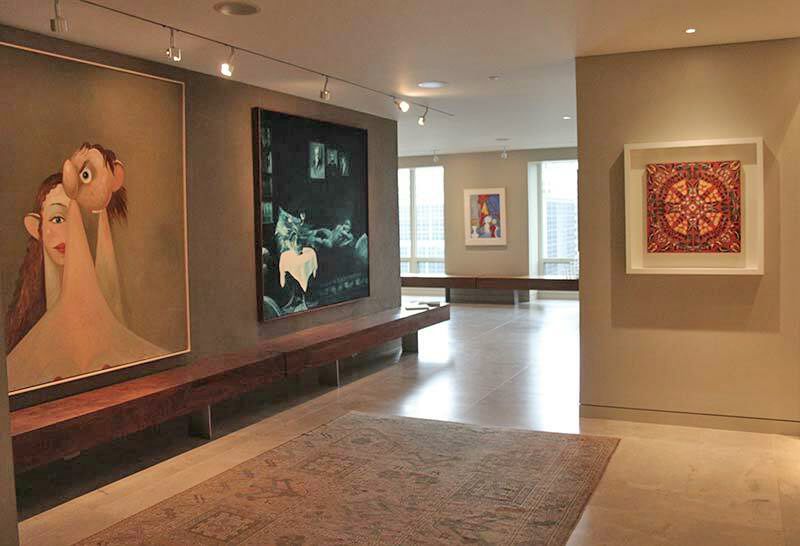
In the tranquil entryway, muted by opaque green glass panels, a handful of large-scale paintings are meant to make a dramatic first impression. Mark Tansey is a favorite of the couple. His Utopic, in his signature inky blue, looms on the wall opposite the front foor, featuring a dreamy scene from Anna Freud's study. Larry notes that the hermaphrodite statue picture on the chaise actually exists in the Louvre. Freud, Marx and Nietzsche are looking down from inside their portrait frames, psychoanalyzing her sexual identity.
In the Fields' long, open dining room, four 1970s-looking photographs by Richard Prince are lined up opposite a wall of windows overlooking the Lake. Larry excitedly explains the placement, "When we have dinner parties, the guests at the table can pick their favoite lady. The ladies are all looking to the left, to the east, in the room. What are they looking for? Love. We made sure to place Robert Indiana's LOVE sculpture at the east end of the buffet to create a story line for everyone."
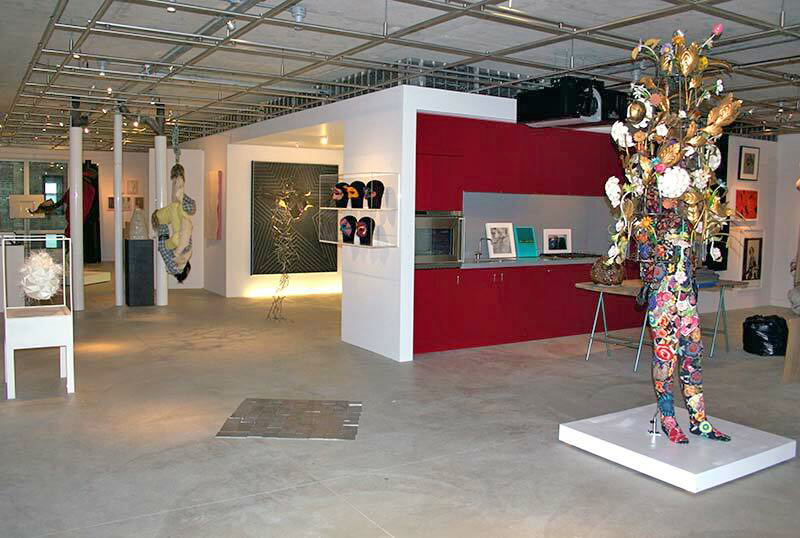
Larry tells me that they move works around in the apartment's private gallery about 2-3 times a year, whereas most art in the main apartment stays put. An initial impression of the gallery is of whimsy and interaction, exemplified by Anish Kapoor's target-like, shiny whirlpool, which draws your attention as you enter the room. Set into the wall itself, the viewer has the sense of falling down a rabbit hole to infinity—it's like having a Millenium Park "Bean" at home, without the crowds.
Groupings, common in the gallery space, are evidence of Larry's fondness for curating. Marilyn explains, "He really loves delving into each work of art and sharing all the stories." Larry puts works together according to a theme, such as surface, era, concept, or global geography. He enjoys seeing how things go together and how they speak to each other. One group focuses on an African American aesthetic, showcasing Mark Bradford's bags of soccer balls, as well as a flag by David Hammons, and pieces by Rashid Johnson, Hank Willis Thomas, Lyle Ashton Harries, and Kara Walker. Larry is undeniably proud of all of the works in the collection—it's as if the artists are his children and he's the proud parent. Art conjures up different things to different people, and as tour guide Larry offers his own insights while also allowing others to say how a work's message might appear to them. He reflects, "I think art can leave a personal space to think about what it means to you."
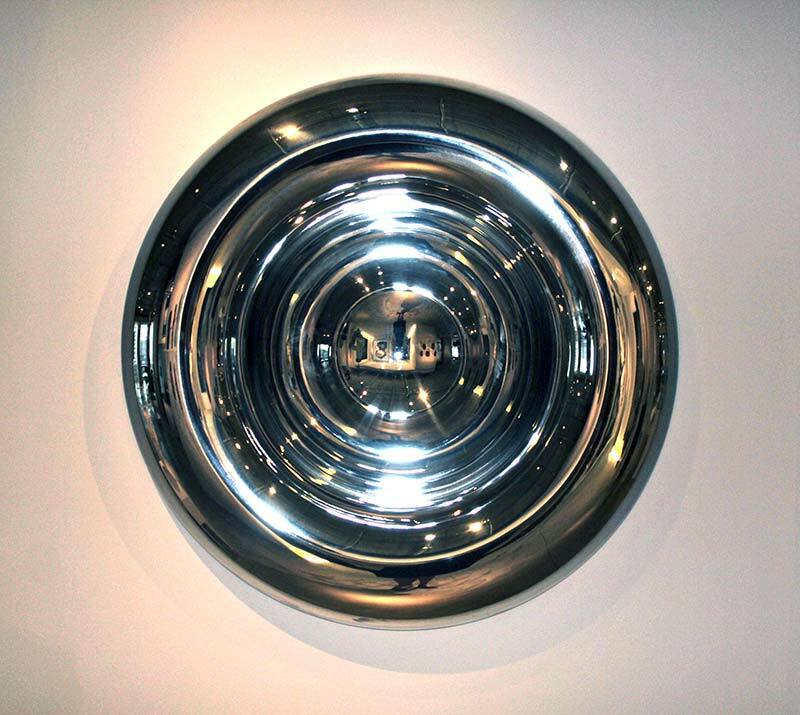
The Fields are frequently generous with their time as well as their knowledge, leading tours of their home for groups interested in contemporary art. Marilyn admits that though she's a very private person, "I want someone to come here and really learn – to think this is it." Larry adds, "As an art collector, I think you have a responsibility to know the art and to also open up your home and be able to share it and help others see. You must know about the artists and understand their work and why it's here."
Of course, the ultimate goal of collecting is appreciation and enjoyment. Together Marlyn and Larry agree, "It's about not taking yourself too seriously. That's what it's all about—fun."
#
